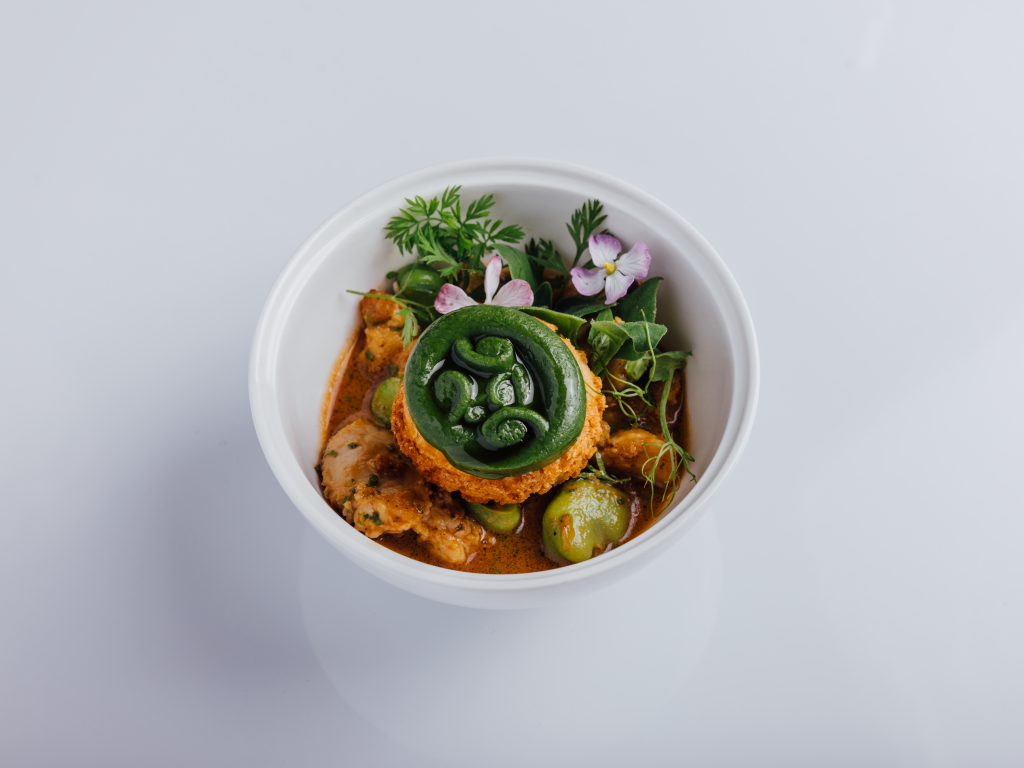PRAWNS HAVE BECOME INCREASINGLY ACCESSIBLE TO THE AVERAGE CONSUMER, BUT SHOULD THESE FOREIGN CRUSTACEANS BE ON KIWIS’ MENUS AT ALL? – THOMAS HEATON INVESTIGATES
While kiwis are not as well-known for their affection for the prawn as Australians, plenty of New Zealanders make the most of the wee crustaceans over the summer months. But recently, Cuisine editor Kelli Brett, who hails from that prawn-loving nation across the ditch, put a question to her Kiwi team: “Should we be eating prawns at all?”
They have become cheaper and more accessible and the variety has widened for the average consumer. But there’s a reason.
New Zealand’s waters are too cold for prawns – the closest we have are their larger cousins, scampi. However, bags and trays of thawed or frozen prawns are a staple in New Zealand supermarkets, while plenty of restaurants serve them to their customers in various forms.
The prawns we get in New Zealand predominantly hail from Vietnam, China and Thailand, and are available cheaply year-round. There are also Australian varieties, which are typically sold at a higher rate, both wild-caught and farmed.
The only prawns growing in New Zealand are at Huka Prawn Park, north of Taupō, which heats its water with residual heat from the Wairakei geothermal power station nearby. Visitors are able to fish for prawns, or sample them at the on-site restaurant. Keeping waters warm enough has proven too costly for others to follow suit, thus far.
Chef Darren Lovell, owner of Queenstown seafood restaurant Fishbone, has prawns on his menu. But he is conflicted. New Zealand’s love of local ingredients sourced from as close as possible doesn’t fit with the consumption of prawns, he says.
“There seems to be this assumption in New Zealand that prawns are part of our culinary landscape. They’re not.”
Lovell feels he has to have prawns on his menu, because that’s what people want. But because of the dubious nature of the farming, and even wild capture, of prawns, he questions whether Kiwis should really be eating them.
“We have awesome seafood. [Prawns] are the one thing we don’t have, but we have a lot of things that other countries don’t have,” Lovell says.
“I’m trying not to be hypocritical. When I made a decision to do prawns, I spent a lot of time researching which prawns to use.”
Lovell says the black tiger prawn, one of the most prevalent in New Zealand, is an “environmental disaster” (except for those farmed on Australia’s Pacific Reef ).
Vannamei and black tiger prawns account for a major part of New Zealand’s prawn market, while major retailers also have Australian banana prawns available. Argentinian red shrimp, which require deep-sea trawling to catch, can be found here too. (Prawns and shrimps have slightly different anatomies but the names are often used interchangeably.)
John Ford, a lecturer in seafood sustainability at the University of Melbourne, says prawns, on the whole, are in the bottom half of the spectrum of sustainability. Common practice for gathering prawns is trawling – dragging nets through the water – which can be destructive because of the nets’ small holes that gather up everything else as well. And as prawns thrive in coastal areas, typically breeding grounds for fish, by-catch is a problem.
According to Australian Greenpeace’s Prawn Guide, Thai black tiger prawns and vannamei prawns from Thailand, Vietnam or China are “bad”, while Vietnamese black tiger prawns get a slightly less-bad “dodgy” rating, because of the nature of the production and harvest.
Wild-caught Australian banana prawns, which Lovell decided to use at Fishbone, are “good”, according to the site, thanks to their relatively shallow depth of activity. The Argentinian shrimp is not in the prawn guide, but should be avoided because of trawling, according to the California-based Monterey Bay Aquarium’s Seafood Watch.
Ford agrees with Lovell that New Zealand has a unique and thriving fish stock, but is reluctant to tell Kiwis not to eat prawns, thinking adopting a treat mentality might be a better way to go.
“I never say don’t eat something.
A lot of this is about moderation and people stepping back and looking at their own values.
“New Zealand has amazing seafood – just because they don’t have prawns, doesn’t mean they are lacking in any way. The fish reserves in New Zealand are far superior to what we have in Australia.”
It’s the price point that reveals the issues, Ford says, because not all prawns are created equal. “Prawns are a lot more accessible to a lot more people, but they have not lost that gourmet, expensive, sort of ‘top-dollar’ food status.”
However, many prawns “are produced in sets of circumstances, in some parts of the world, that people would hopefully not be paying top dollar for”.
Ford refers to environmentally and socially questionable practices happening in South-east Asia which, he says, Kiwis and Australians would not accept with locally produced food.
Poor working conditions, impacts on health and education, pollution of drinking water and displaced communities were listed in a report on the effects of the shrimp-farming industry published by the Environmental Justice Foundation (EJP) in 2003.

Owner of Queenstown seafood restaurant Fishbone
Darren Lovell
There seems to be this assumption in New Zealand that prawns are part of our culinary landscape. They’re not.

General Manager of Yellow Brick Road
Martin Bosley
It’s just the water quality. You just don’t know what’s in it. And they’ll do anything to get those prawns to market, and get them there quickly.

A lecturer in seafood sustainability at the University of Melbourne
John Ford
I would look at the country of origin, and ask yourself as a purchaser – am I confident that the producers and regulators there are doing a good job?
The report, which covered multiple countries in Asia and South and Central America, attributed 40 per cent of the world’s mangrove loss to the rapid expansion of shrimp farming.
Pollution of drinking water and agricultural land also frequently result from shrimp and prawn farming, as the farms pump out their waste water into the canals, rivers and nearby sea waters, contaminating them with pesticides, antibiotics and disinfectants.
“There are some exceptions,” says Ford, “but the problem is that there is no way of knowing.”
Gathered and packed in various spots, prawns are sent in bulk around the world. And because no single farms or areas are being singled out or highlighted, there’s no profitable incentive for farmers to uphold levels of sustainable practice or social responsibility.
“It is hard for them to differentiate their product in our marketplace and for them to get the additional money they might want or expect,” says Ford.
In New Zealand, country-of-origin labelling is often placed on prawns – both Countdown and Foodstuffs NZ, which owns New World and Pak ‘N’ Save, follow this practice, and both source prawns from South-east Asia and Australia, among other areas. Both, too, have policies in place for the sourcing of prawns, which cover food safety and quality. Countdown follows the Woolworth’s Ethical Sourcing Policy for suppliers, which covers workers’ rights and environmental impacts, but Ford says it’s still murky.
“It could come from one of thousands of farms that are operating under different standards. It really comes down to the retailers to have their own standard around the seafood that they source.”
Foodstuffs NZ says it has a policy of working with reputable processors who supply relevant certifications on food safety, export certification and commercial trade information, and its seafood and private label teams make factory visits locally and abroad.
Ford doesn’t believe that those policies, similar to what Australian supermarkets have, demystify things to much extent, however.
There are independent standards, like the international Marine Stewardship Council certification, which can be followed, says Ford – but whether such standards could ever be policed in countries where the dubious practices are rife seems unlikely at the moment.
So, at the end of the day, it all comes back to the consumer.
“I would look at the country of origin, and ask yourself as a purchaser – am I confident that the producers and the regulators in those countries are doing a good job? It’s sometimes as simple as that.”
Wellington-based seafood supplier Yellow Brick Road provides fish for New Zealand’s top restaurants, sourcing from fishermen who use the most sustainable methods of gathering their catch. King prawns are on the company’s supply list, sourced from Marine Stewardship Council-certified waters off Australia.
Acclaimed chef Martin Bosley, the company’s general manager, says South-East Asian prawns are not only dodgy, they’re not very nice either.
He uses words like “floury” and “spongy” to describe the prawns, which he has cooked with in the past. One popular dish he used to make – prawns, mascarpone, amaretto, hazelnuts and orange zest tossed through linguine – was loved by patrons, but it wasn’t because of the prawns. “I just find that those prawns don’t really contribute much of a prawn flavour,” he says. At best, it was a little bit of added texture.
In addition, “It’s just that water quality,” Bosley says. “You just don’t know what’s in it. And they’ll do anything to get those prawns to market, and get them there quickly.
“If we don’t know who caught it, how and where, we don’t buy it.”
A Countdown spokeswoman told Cuisine that prawns were a “staple protein source” for many of its customers, but Ford thinks it’s best we go back to viewing prawns as a delicacy, rather than a daily or weekly item.
“There’s constant competition to drive price lower and lower. The end point of that is we’re going to have to source it from overseas. If we keep demanding for things to get cheaper and cheaper, the end result of it will be nothing will come from our country.”
For Ford, local for Kiwis can mean Australian, if eaten moderately, and if people are prepared to fork out a little more from their wallets.
“If we only work on price, then we’re not going to be producing anything. And at the end of the day, we’ll end up getting what we deserve.”
SEE MORE FROM CUISINE
Bocuse d’Or Team New Zealand – A Night of Art, Music, and Gastronomy
Team Bocuse d’Or NZ are fundraising for the upcoming Bocuse d’Or.…
Traffic September / October 2024
Reminiscent of Melbourne’s greatest rooftop bars with hidden…
Inspirational Women in Food & Drink
Ideas, ambitions and dreams are important. Continuing our series on…
Puff Bread: Restaurant Quality Freshness At Home
Indulge in the delight of homemade, fresh and crispy puff bread.






